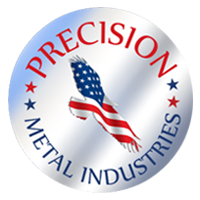Welding is a unique joining solution due to its high temperature: unlike brazing or soldering, welding joins materials through fusion, applying enough heat to melt the base metal workpieces involved. The use of a filler material creates a molten weld pool for additional strength, creating very powerful bonds.
What Is MIG Welding?
MIG, or “metal, inert gas” welding, is also known as Gas Metal Arc Welding, or GMAW. It’s distinct in that it utilizes an adjustable wire feed along with a shielding gas made of argon and CO2 to protect the weld from contamination in the surrounding atmosphere. The only control a welder has to handle is the welding gun.
Developed in the 1940’s, MIG welding machines constantly fill the working weld joint with wire, making the process semi-automated. MIG welders manipulate the wire feed with a trigger mechanism while primarily applying focused manual skill to creating the weld.
In order to create MIG welds, a setup requires a source of electricity and an electrode to fill the weld joint. This creates a power arc, producing focused heat to melt the workpiece materials and create a weld. In addition, MIG welding must have shielding gas in a constant feed to protect the process, making it best for indoor applications or environments sheltered from high winds.
MIG Welding Wire and Gases
The proper MIG wire for a job must be a material match for the metal workpieces as well as providing the appropriate electrode quality to create the welding arc. Most MIG welding wire is solid, with a range of thickness between .023 and .045, though thicker wire performs better for heavy industrial projects.
The electrode does not have its own shielding, nor does the filler wire, which is why MIG welding requires shielding gas. The MIG gun feeds the gas directly onto the weld area of the joint for an airless work zone.
The gas for a particular weld must be chosen for its compatibility with both the electrode and the base metal being used in the project; without a match, the weld won’t work. The depth of the weld, the welding arc characteristics, and the weld’s mechanical properties all rely on the right choice of gas.
Typically, MIG welding gas will involve some inert or semi-inert mixture of argon, carbon dioxide, and helium. Oxygen, hydrogen, and nitrogen can also be used to blend with argon, depending upon the application.
Materials and Applications
MIG welding stainless steel became very popular very quickly due to its speed and efficiency. Though the process was originally developed for welding aluminum, it has evolved to be the most common type of industrial welding in practice.
The MIG process can handle almost any weldable metal, with the most common being carbon and stainless steel. MIG welding aluminum is also extremely popular. No matter the material, MIG setups offer speed, versatility, and the ability to integrate machine or robotic assistance, making it useful for many applications and industries, including:
- Defense/Military
- Medical
- Aerospace/Avionics
- Energy
- Electronic enclosures
- Custom projects
Contact the team today to see how PMI can meet the MIG welding and fabrication needs for your next project.




